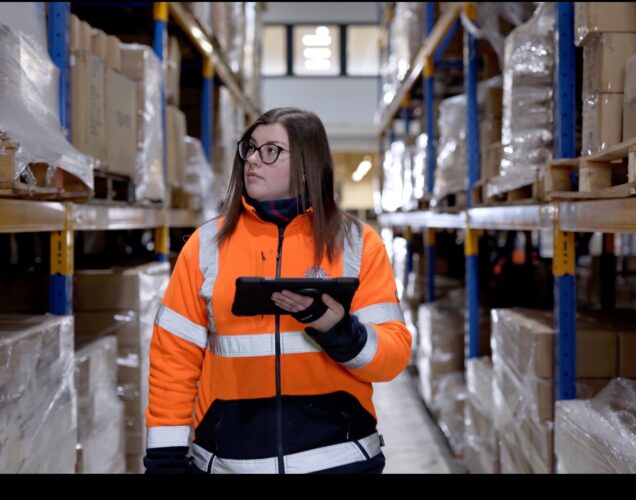When Rolls Royce and Google announced a partnership, we knew something big was coming. By 2020, this powerful team could potentially change the ocean freight industry forever with crewless ships. By addressing the positive and negative effects of having no crew, it becomes clear how significant the transition to these autonomous ships could be.
How do ships run without a crew?
The ship’s computer system uses GPS, radar, cameras and sensors to avoid hazards on its journey. Rolls Royce will provide this technology through their object classification system, which is designed to “detect, identify and track surface objects”. Their artificial intelligence system will be trained by Google’s Cloud Machine Learning Engine technology. Advanced technology means a crew is unnecessary because technically the ship will run itself.
Autonomous ships have the potential to be both beneficial and risky to the ocean freight industry. First, let’s focus on the perceived benefits.
Saving lives and the environment
A major benefit of autonomous ships is zero-emissions. In Norway, electric ships could replace 100 diesel truck journeys. The leading fertiliser company YARA hopes this will “reduce noise and dust emissions, improve the safety of local roads, and reduce NOx and CO2 emissions”. Carbon dioxide (CO2) emissions contribute to various harmful effects including acid rain, smog and the greenhouse effect that leads to global warming.
Another harmful gas is sulphur dioxide (SO2), which has been linked to lung cancer and heart disease. The shipping industry’s SO2 limit was 3,500 times more than diesel cars on Europe’s roads, but a new cap could reduce SO2 emissions by 85% and prevent 200,000 early deaths. Zero-emission, autonomous ships would reduce emissions further and save even more lives.
Costly short-term, cheaper long-term
It’s estimated that an individual autonomous ship might cost $25 million, which is three times higher than a manned ship. However, long-term savings could make the initial cost worthwhile. Investors say that with no “fuel or crew, annual operating costs would be cut by up to 90 percent“.
Another way autonomous ships will save money is through insurance costs, particularly given that pirate hijackings were a major threat to ships until companies took steps to increase security in recent years.
“Defensive measures like armed guards and barbed wire cut piracy from 163 incidents to 69 within a year, according to the International Maritime Bureau.”
Fewer incidents means fewer insurance claims and fewer claims means lower insurance costs. Autonomous ships would lower insurance costs further because there would be no crew to hold hostage for ransom.
Nothing is perfect and autonomous ships are no exception. Despite the great benefits to the ocean freight industry, there are also downsides to replacing a crew with technology.
Expensive computer glitches
Every computer experiences glitches and they can be costly. A computer glitch in Melbourne’s Metro Train system left passengers stranded for almost three hours, caused 378 late services and led to 224 service cancellations. Metro Trains was fined $1.2 million – a figure that could cripple an independent ocean freight operator.
“Shipping companies may face fines if autonomous ships malfunction and cause serious, costly delays to multiple industries worldwide.”
Less employment or more?
The International Maritime Union Nautilus expressed concern about staff members losing jobs to technology. Their fear is justified. In 2015, the Bank of England found that in Britain “up to 15 million jobs could be at risk of automation. In the US, the corresponding figure would be 80 million jobs.” Rolls Royce suggests that the crew relocate to a different department, such as cybersecurity jobs on land. Some employees might like the thought of earning more in the technology sector, but not if their dream was to work at sea or their skillsets don’t translate to the change in role.
The benefits of autonomous, crewless ships include lower costs, greater safety and less pollution. Not only could these benefits increase ocean freight profits, but also save an estimated 200,000 lives and maintain a healthy environment for generations to come.
How close are we to autonomy becoming reality?
With the recent reveal of the working Yara Birkeland model showcasing the design and technology of the vessel which is pegged to be the first autonomous vessel on the oceans, the race and excitement for fully autonomous ships is on and certainly now more than just a concept and pipe dream. This should be a positive chance for the shipping industry, which has, for the most part, lacked in major technological advancements.
The opportunities in developing and building these types of vessels will be massive for the global economy in a vast array of industries, not to mention the environmental benefits of running fuel free vessels. To transport freight to areas which are currently unreachable by crewed vessels due to location, demand or costs will benefit both the operators and customers. In a world of hybrid cars, ‘green’ buildings and renewable energy, it is time to embrace the possibilities that unmanned, fuel free vessels can offer.






